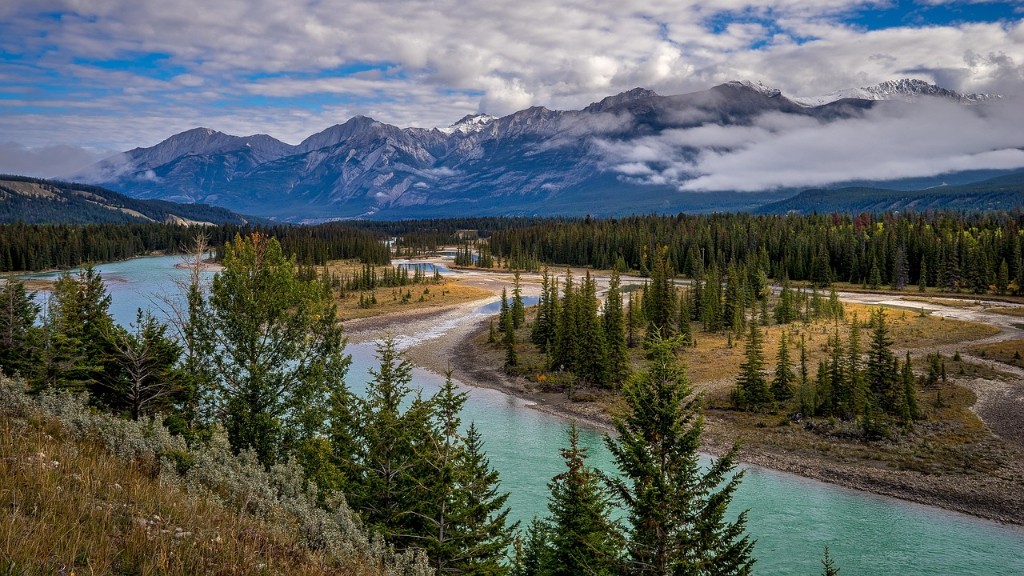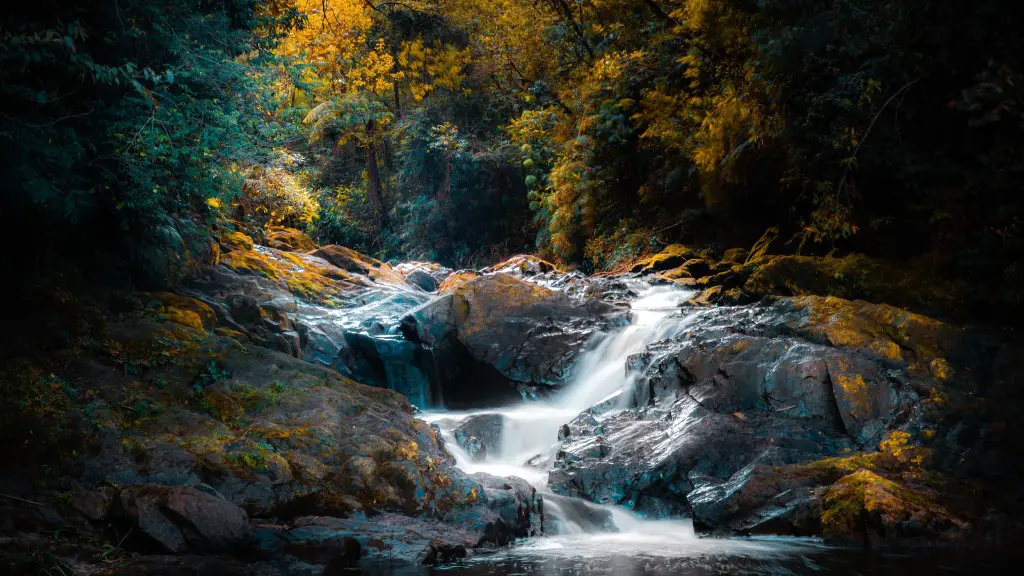The Ganges River is one of the most important rivers in India and is considered to be a sacred waterway by Hindus. Every year, millions of people travel to the river to bathe in its waters and to perform spiritual rituals. The river is also a major source of drinking water and irrigation for the region.
The Ganges River is one of the most important rivers in India. It is considered holy by Hindus and is a popular tourist destination. The river is also a source of water for many people living along its banks.
Do people live on the Ganges River?
The Ganges river is one of the most important rivers in Asia. It flows from the Himalayas all the way to the Bay of Bengal, through some of the most densely-populated regions in the world. The river basin is more than 1 million square kilometers, and home to over 650 million people. The river is a vital source of water for agriculture, industry, and domestic use. It is also an important transportation route for goods and people. The Ganges river is considered sacred by Hindus, and is a popular destination for pilgrims and tourists alike.
The Ganges Delta is a fertile area for agriculture and about two-thirds of the Bangladesh people work in this sector. The major crops grown in the area are jute, tea, and rice. Jute is used to make ropes and mats, while tea and rice are staple foods in Bangladesh. The country also exports these crops to other countries.
Why is the Ganges River important culturally
The River Ganges is a sacred river in Hinduism and is also a source of livelihood for millions of people in the Indian sub-continent. She is the center of social and religious tradition in the region and is revered by Hindus as a symbol of faith, hope, culture, and sanity. The river is also known for its healing properties and is said to cleanse the soul of those who bathe in her waters.
The river and its tributaries are a vital water source for 400 million people Most of India’s population can be found in the northern belt around the Ganges. The river is used for irrigation, drinking water, transportation, and more. The Ganges is also a major source of income for many people who live along its banks.
Do people get sick bathing in the Ganges River?
Bathing in the Ganges river can expose people to high levels of faecal coliform bacteria. These bacteria can cause serious gastrointestinal illness, including diarrhoea, cramps, nausea and vomiting. People with weakened immune systems, such as young children and the elderly, are particularly at risk of becoming ill if they bathe in water contaminated with faecal coliform bacteria.
Hindus believe that water has the power to cleanse away sin. So, no matter how dirty the water is, it is still considered holy. Many Hindus will take a dip in water as a way of cleansing away their sins.
It is also a practice in Hinduism to sprinkle a little water on your head. This is seen as equivalent to being blessed by the water.
Do people live on the Ganges Delta?
The Ganges Delta is one of the most flood-prone regions in the world. Every year, heavy rains and melting snow from the Himalayas cause the river to swell, resulting in devastating floods that destroy homes, crops, and infrastructure. Over 120 million people live in the delta, and many of them are at risk of being affected by these floods. In recent years, the Indian government has been working to improve the delta’s flood defenses, but there is still a long way to go to make the region safe from these natural disasters.
The Ganges River is one of the most important rivers in Hinduism. Every day, millions of Hindus bathe in the river as part of their religious practices. However, the river is extremely polluted. Every day, around three million litres of sewage is emptied into the river. Only about half of that has undergone any kind of treatment. As a result, the river’s waters are so dirty that it’s considered one of the most polluted waterways in the world. This is a major problem for Hindus who rely on the river for their religious practices. It’s also a major health hazard for anyone who comes into contact with the water.
Why is the Ganges so special
The Ganga river is one of the most important rivers in India. It provides water to 40% of the population and is a major source of irrigation for crops. The river is also a lifeline for the people of India. It is a source of water for drinking, bathing, and washing. The river is also a source of livelihood for many people. Fishermen, for example, rely on the river for their livelihood. The river is also a source of transportation for many people.
The system of irrigation canals in the Ganges valley has increased the production of cash crops such as sugarcane, cotton, and oilseeds. The older canals are mainly in the Ganges-Yamuna Doab. This has resulted in increased cultivation in the area and has benefited the local economy.
Why is Ganga considered sacred?
The river Ganges is one of the holiest rivers in Hinduism and is known as Ganga Ma, or Mother Ganges. The river is believed to have the power to cleanse the sins of the faithful and to aid the dead on their path to heaven. Hindus believe that bathing in the river will purify their body and soul, and many pilgrims come to the river to perform this ritual. The river is also an important part of Hindu funeral rites, as it is believed to help carry the soul of the deceased to the afterlife.
The Ganges basin is one of the most densely populated regions on earth. The untreated sewage dumped into the river, industrial waste, agricultural runoff, remnants of partially burned or unburned bodies from funeral pyres, and animal carcasses all contribute to polluting the Ganges. As a result, the Ganges is one of the most polluted rivers in the world.
Is the Ganges drinkable
The Ganges river is one of the most sacred and important rivers in India. It is also one of the most polluted. The main source of pollution is from the millions of people who live along its banks and use it for everything from washing clothes to bathing to drinking.
The level of coliform bacteria in the Ganges is 5,500. This is much too high for agricultural use or for safe drinking and bathing. The pollution is having a serious impact on the river’s ecosystem and the health of those who rely on it.
The government is taking steps to try to clean up the Ganges but it is a huge task. In the meantime, people should be aware of the pollution and take steps to protect themselves.
The water quality analysis report submitted by the State Pollution Control Board indicates that the water of river Ganga is not fit for drinking purpose but is fit for bathing purpose.
What lives in the Ganges River?
The Ganga River is one of the largest river systems in the world. It is home to important aquatic fauna such as the Gangetic river dolphin, gharial, otters, turtles and several aquatic and terrestrial birds. The river is an important source of water for many communities in India and is also used for recreation, including boating and swimming.
The Ganges River in India is one of the most polluted rivers on the planet. However, there is a myth that bathing in the river or drinking the water is completely safe. This is not true. The water in the Ganges River is contaminated with sewage and industrial waste, and it can cause illness. If you do bathe in the river, be sure to wash thoroughly afterwards.
Can the Ganges River clean itself
It is interesting to note that the water in the Ganges River contains oxygen levels that are 25 times higher than any other river in the world. This is one of the reasons why the Ganges River has such self-purifying attributes, and the high levels of oxygen in the water helps it to remain fresh over a longer period of time.
The scientific reason behind why the water of the river Ganga is naturally bacteriophage-free is that the bacteriophages present in the water do not allow for bacterial growth. These bacteriophages are able to kill bacteria through a process known as lysis, which breaks open the bacterial cell wall and destroys the bacteria.
Final Words
The Ganges River is considered holy by Hindus and is a popular place to live for many people in India. The river is a major source of fresh water and provides a means of transportation, as well as a place to cool off during the hot summer months.
The Ganges River is a lifeline for millions of people who live along its banks. It is a source of water for drinking, irrigation, and transportation, and it is also a place of worship and a source of fish. The river is also a major source of income for many people, as it is used for tourism and for hydraulic power.





